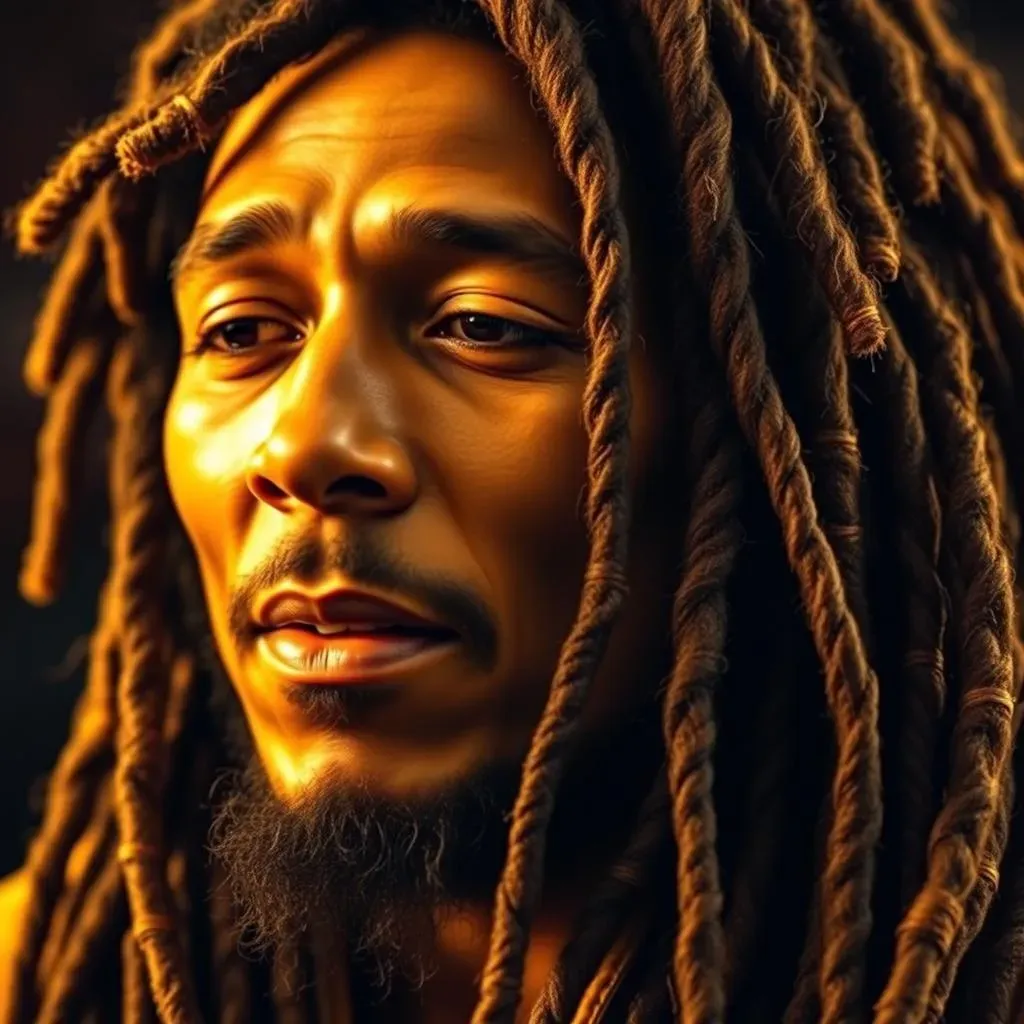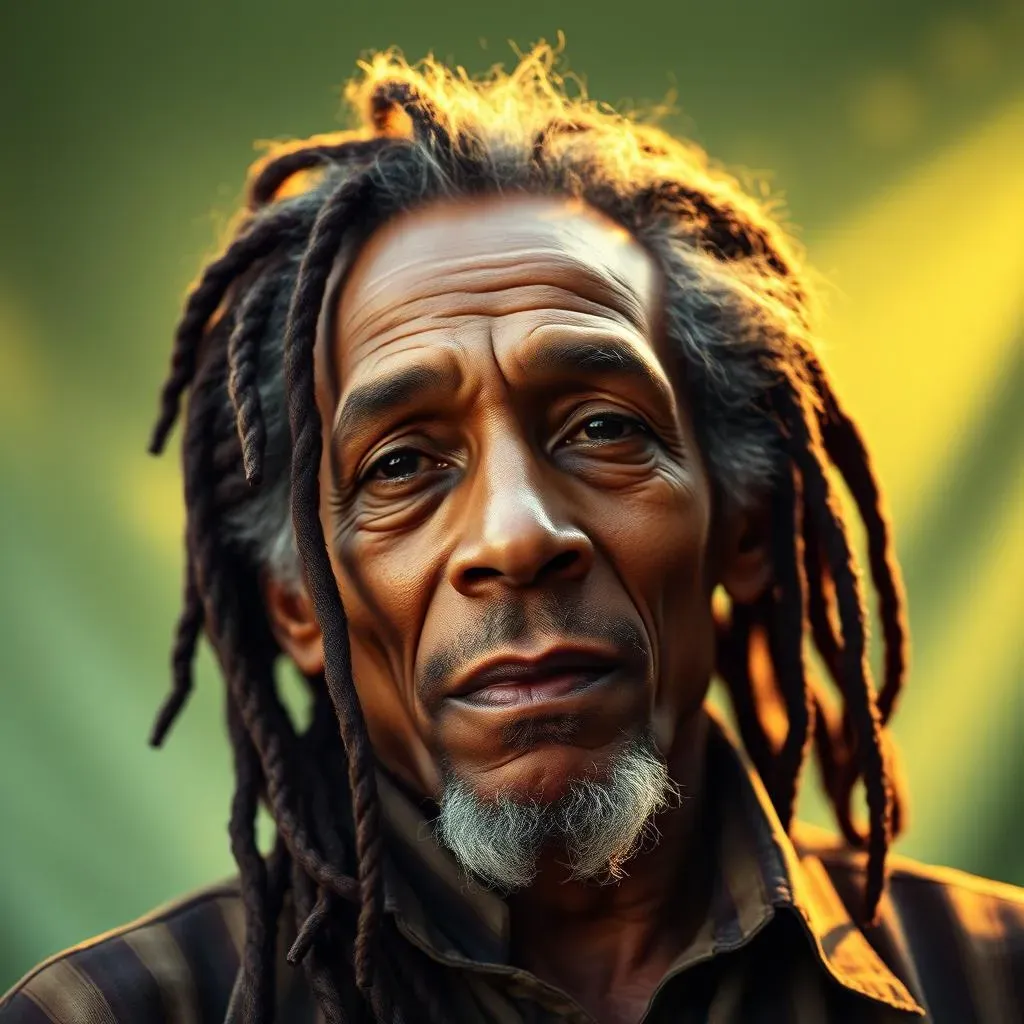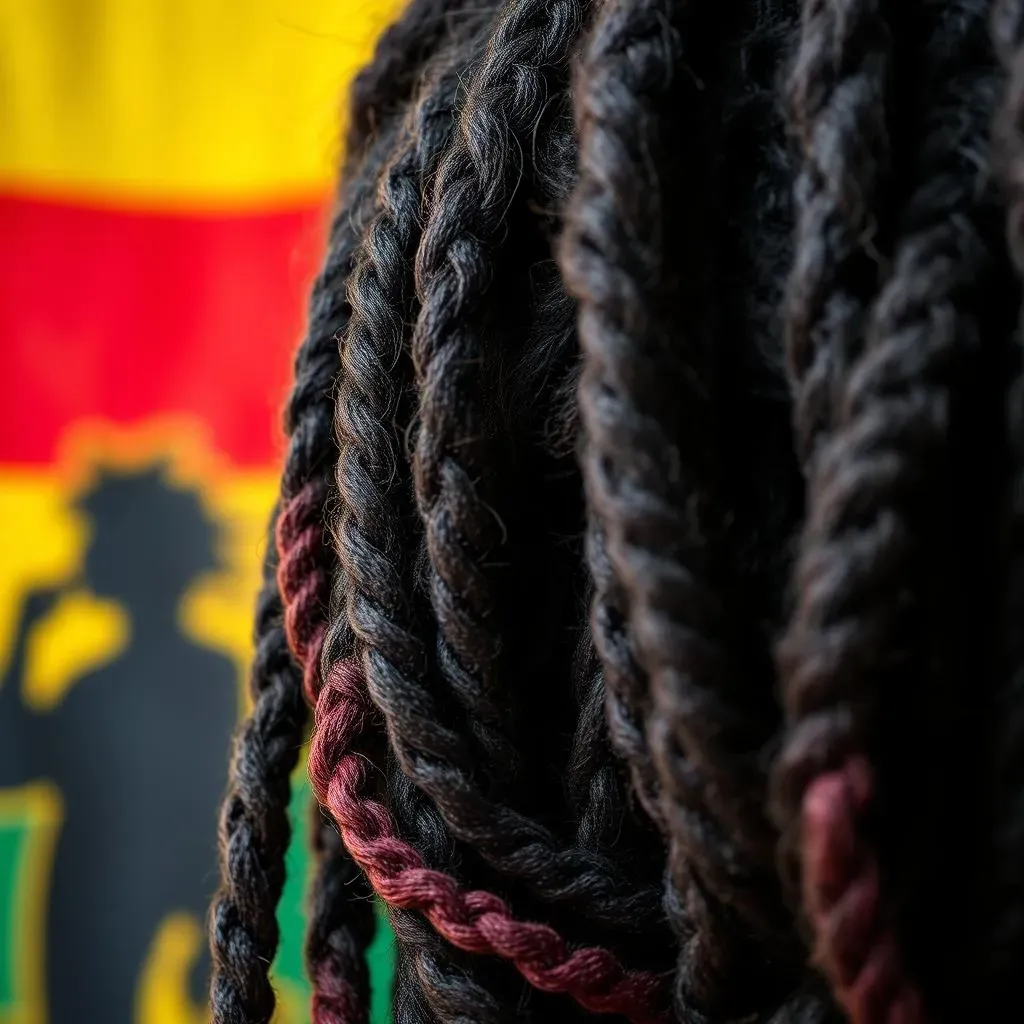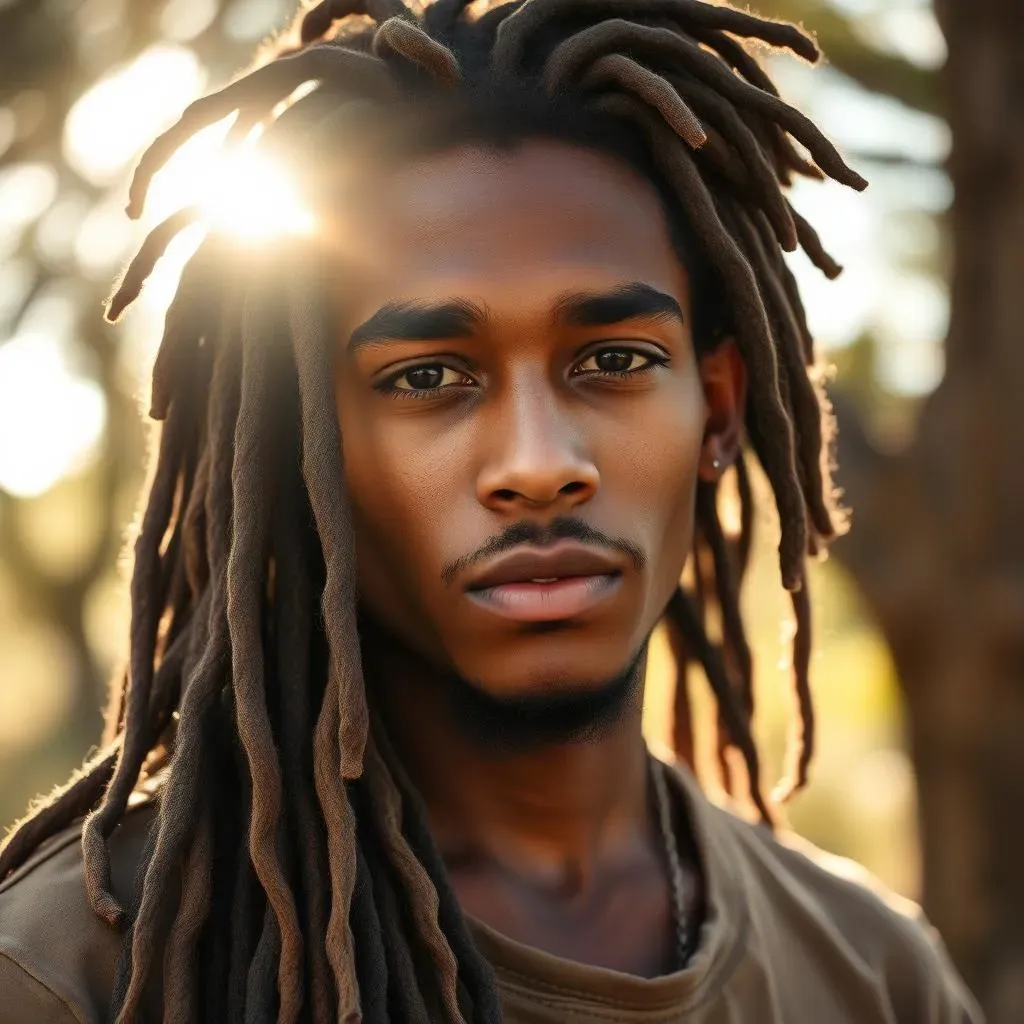Table of Contents
Bob Marley, the reggae icon, is synonymous with more than just his revolutionary music; his image is forever etched in our minds with his flowing, powerful dreadlocks. These weren't just a hairstyle; they were a symbol of his Rastafarian faith, a visual representation of his spiritual journey and connection to Jah. For decades, fans have wondered about the fate of his iconic mane. So, **did Bob Marley cut his hair**? The answer isn't as straightforward as you might think. This article dives deep into the rumors and realities surrounding Bob Marley's hair, exploring its significance, the stories behind its care, and the circumstances surrounding its eventual departure. We'll separate fact from fiction, providing insights into the cultural importance of dreadlocks and the personal choices Marley made towards the end of his life. Prepare to unravel the mystery and gain a deeper understanding of the man behind the music and the meaning behind the locks.
Bob Marley's Dreadlocks: A Symbol of Rastafarian Faith

Bob Marley's Dreadlocks: A Symbol of Rastafarian Faith
The Natural Formation of a Spiritual Statement
Bob Marley's dreadlocks weren't a fashion statement; they were a deeply personal and spiritual commitment. In Rastafarianism, hair is seen as a symbol of spiritual power and a connection to the divine. The locks are allowed to grow naturally, without cutting or combing, representing a rejection of societal norms and a commitment to a natural way of life. It's a journey, a process of growth, twisting, and matting that reflects the individual's spiritual development. Think of it like a living prayer, constantly evolving and strengthening.
Marley's commitment to this practice wasn't about vanity; it was about embodying his beliefs. His dreadlocks became a visual representation of his faith, a powerful symbol that resonated with millions around the world. They were a statement of resistance, a celebration of African identity, and a testament to the power of natural living.
Dreadlocks as a Manifestation of Rastafarian Beliefs
Rastafarianism emphasizes a connection to Africa, a rejection of "Babylon" (the oppressive Western world), and a belief in the divinity of Haile Selassie I, the former Emperor of Ethiopia. Dreadlocks, in this context, become a powerful symbol of these beliefs. They represent a return to African roots, a rejection of Western ideals of beauty, and a spiritual connection to Jah (God).
The uncombed, untamed nature of dreadlocks also signifies a rejection of the constraints of Babylon. It's a visual declaration of freedom, a refusal to conform to societal expectations. Each lock becomes a testament to the individual's commitment to Rastafarian principles.
The Evolution of Marley's Locks: A Reflection of His Journey
Throughout his career, Bob Marley's dreadlocks evolved, growing longer and thicker, becoming an even more potent symbol of his faith and influence. His locks weren't static; they mirrored his personal and spiritual growth. As his understanding of Rastafarianism deepened, so too did the significance of his dreadlocks.
His hair became an integral part of his identity, inseparable from his music and his message. When people saw Bob Marley, they saw not just a musician but a symbol of Rastafarianism, a champion of freedom, and a voice for the oppressed. His locks told a story, a story of faith, resistance, and unwavering commitment to his beliefs. It's a powerful example of how something as seemingly simple as hair can become a profound expression of one's inner self.
The Truth About Bob Marley's Hair: Did He Really Cut It?

The Truth About Bob Marley's Hair: Did He Really Cut It?
The Cancer Diagnosis and its Impact
The question of whether **did Bob Marley cut his hair** is a complex one, intertwined with his battle against cancer. In 1977, Marley was diagnosed with acral lentiginous melanoma, a rare and aggressive form of skin cancer, under his toenail. While he initially refused amputation due to his Rastafarian beliefs, the cancer eventually spread. The treatments he underwent, including chemotherapy, took a toll on his body, and ultimately, his hair.
It's widely believed that the chemotherapy treatments caused significant hair loss. While some sources claim Marley shaved his head entirely in his final days, others suggest that his hair simply fell out due to the aggressive nature of the treatment. The truth likely lies somewhere in between. Regardless, the decision, whether forced or chosen, was undoubtedly a difficult one, considering the deep spiritual significance his dreadlocks held.
Conflicting accounts and limited verifiable evidence make it difficult to definitively state whether Marley actively cut his hair or if it primarily fell out due to chemotherapy. Some close to him have suggested that his wife, Rita Marley, may have trimmed or shaved his remaining locks to ease his discomfort during his final days in the hospital. The weight of the dreadlocks could have become unbearable as his health deteriorated.
Ultimately, the exact circumstances surrounding the loss of Bob Marley's dreadlocks remain somewhat shrouded in mystery. What is clear is that his health struggles played a significant role, and the decision, however it came about, was likely a painful one, given the profound spiritual meaning his hair held for him.
Caring for Dreadlocks: Expert Tips Inspired by Bob Marley

Caring for Dreadlocks: Expert Tips Inspired by Bob Marley
The Myth of Neglect: Dreadlock Care Demystified
Contrary to popular belief, caring for dreadlocks isn't about completely neglecting your hair. It's not just about letting it grow wild and free. While a hands-off approach is part of the process, maintaining healthy dreadlocks requires a balance of proper hygiene and natural development. Think of it as cultivating a garden; you need to tend to it, remove the weeds (excess buildup), and allow the plants (your locks) to flourish.
Bob Marley's iconic dreadlocks weren't the result of simply avoiding washing and cutting. They were the product of a lifestyle that embraced natural products and a mindful approach to hair care. While specific details of his routine are scarce, we can glean insights from Rastafarian practices and expert advice on maintaining healthy, vibrant dreadlocks.
Washing Wisdom: Frequency and Products
One of the biggest misconceptions about dreadlocks is that you should never wash them. That couldn't be further from the truth! Washing your dreadlocks is essential for maintaining hygiene, preventing buildup, and promoting healthy hair growth. The key is to find the right balance and use the right products.
Generally, washing your dreadlocks every two to four weeks is recommended. However, this can vary depending on your hair type, lifestyle, and activity level. If you're physically active or live in a humid environment, you may need to wash your hair more frequently. As for products, avoid heavy conditioners and shampoos with sulfates, as these can leave residue and cause buildup. Opt for natural, residue-free shampoos specifically designed for dreadlocks.
Aspect of Care | Recommendation |
|---|---|
Washing Frequency | Every 2-4 weeks (adjust based on activity) |
Shampoo Type | Natural, residue-free, sulfate-free |
Conditioner | Use sparingly, focus on ends (if needed) |
Washing and Maintaining Dreadlocks: A Guide to Healthy Hair Like Bob Marley

Washing and Maintaining Dreadlocks: A Guide to Healthy Hair Like Bob Marley
Pre-Wash Prep: Shaking and ACV Rinses
Before you even think about shampoo, give your dreads a good shake! This helps loosen any trapped dirt, dust, or lint that might be hanging out in there. Think of it as a mini-earthquake for your hair, dislodging all the unwanted debris. Following the shake, consider an apple cider vinegar (ACV) rinse. ACV is a natural clarifying agent that helps remove product buildup and residue without stripping your hair of its natural oils. Dilute the ACV with water (usually a 1:3 ratio) and saturate your dreads, focusing on the roots. Let it sit for a few minutes, then rinse thoroughly. You might smell like a salad for a bit, but trust me, your scalp will thank you!
This pre-wash routine is essential for maintaining healthy dreadlocks. It ensures that your shampoo can effectively cleanse your hair and scalp, without having to fight through layers of buildup. It's like prepping a canvas before painting; you need a clean surface to create a masterpiece.
Shampooing Like a Pro: Double Cleanse for the Win
When it comes to shampooing dreadlocks, a double cleanse is your best friend. The first wash removes surface dirt and grime, while the second wash penetrates deeper to cleanse the scalp and hair follicles. Use a residue-free shampoo specifically designed for dreadlocks. These shampoos are formulated to cleanse without leaving behind any buildup that can weigh down your locks and cause problems down the line. Focus on massaging the shampoo into your scalp, working your way down the length of your dreads. Rinse thoroughly, making sure all the shampoo is gone.
Remember, patience is key! It can take a bit longer to rinse shampoo out of dreadlocks than it does with loose hair. Be thorough and don't rush the process. You want to ensure that your hair is squeaky clean and ready for the next step.
Post-Wash Care: Hydration and Nourishment
After washing, your dreadlocks need moisture! Just like any other type of hair, dreadlocks can become dry and brittle if not properly hydrated. Apply a light, nourishing spray or oil to your dreads while they're still damp. Look for products containing natural oils like coconut oil, olive oil, or jojoba oil. These oils help to lock in moisture, prevent breakage, and keep your dreadlocks looking healthy and vibrant.
Avoid heavy creams and lotions, as these can cause buildup. A light spritz or a few drops of oil is all you need. Focus on applying the product to the ends of your dreads, as this is where they tend to be the driest. You can also gently massage the product into your scalp to promote healthy hair growth.
- Apply light, nourishing spray or oil while damp.
- Use natural oils like coconut, olive, or jojoba.
- Focus on the ends and scalp.
- Avoid heavy creams and lotions.
Achieving the Bob Marley Look: Natural Matting and Effortless Style

Achieving the Bob Marley Look: Natural Matting and Effortless Style
Embrace the Natural Process: Letting Go of Control
So, you want to channel your inner Bob Marley? It's less about meticulously styling and more about embracing the natural process. Think of it as guiding, not forcing. The key to achieving that effortless, iconic look is to allow your dreadlocks to naturally matt and intertwine over time. Resist the urge to constantly retwist or separate them. The more you manipulate your hair, the less natural it will look. Bob Marley's dreadlocks had a unique, organic quality that came from years of allowing them to develop on their own. It's like letting a wild garden grow; the beauty comes from its untamed nature.
This doesn't mean you completely abandon your hair! Regular washing and moisturizing, as discussed earlier, are still crucial. However, when it comes to styling, less is definitely more. Allow your dreadlocks to find their own path, to connect and merge in their own unique way. Embrace the imperfections, the asymmetry, and the individuality of each lock. That's where the true beauty lies.
Mimicking Marley's Later Style: Thicker Locks and Natural Connections
If you're specifically aiming for Bob Marley's later-era dreadlock style, you'll notice that his locks were thicker and more interconnected. This was a result of allowing them to naturally matt together over time. Instead of meticulously separating each lock, let them merge and form larger, more substantial sections. This creates a more unified and organic look, reminiscent of Marley's signature style.
One technique to encourage natural matting is to gently palm-roll sections of your dreadlocks together after washing. This helps them to intertwine and connect, creating thicker and more defined locks. However, avoid doing this too frequently, as it can lead to excessive matting and make it difficult to separate your dreadlocks later on, if desired. The goal is to encourage natural connection, not to force it.
The Art of Effortless Style: Confidence and Authenticity
Ultimately, achieving the Bob Marley look isn't just about the hair; it's about embodying his spirit. It's about confidence, authenticity, and a commitment to living your truth. Bob Marley's dreadlocks were an extension of his personality, a visual representation of his beliefs and values. To truly capture his style, you need to cultivate those same qualities within yourself.
Wear your dreadlocks with pride, embrace their natural beauty, and let them be a reflection of your own unique journey. Don't try to be a carbon copy of Bob Marley; instead, use his style as inspiration to express your own individuality. Let your hair be a symbol of your freedom, your creativity, and your unwavering commitment to being yourself.
Conclusion: The Enduring Symbolism of Bob Marley's Hair
The question of whether **Bob Marley cut his hair** is more than just a matter of historical record; it touches upon themes of faith, identity, and mortality. While the physical locks may have been gone in his final days due to the ravages of cancer treatment, the symbolism they represented continues to resonate. Marley's dreadlocks remain an iconic image, a testament to his commitment to Rastafarianism and a powerful symbol of resistance, spirituality, and natural beauty. Whether he chose to cut them or they were lost to illness, the legacy of those locks lives on, inspiring generations to embrace their roots and stand firm in their beliefs. Bob Marley's hair, or lack thereof at the end, doesn't diminish his impact; it only adds another layer to the complex and compelling story of a musical legend.